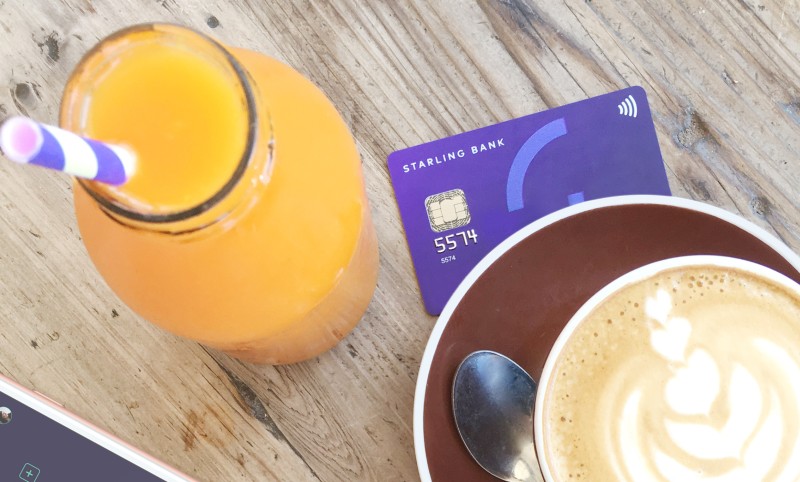
The coronavirus pandemic has changed the way we work, socialise, shop and, at some level, it changed the way we think about money.
Countries around the globe have enforced lockdowns and advised their citizens to socially distance and avoid non-essential travel. Brick-and-mortar shopping is now rarer and when it does happen, it is more likely to be cashless, with people increasingly using their contactless cards, phones or smartwatches at the checkout.
Most of the remaining shopping is now increasingly done online, with food delivery services and online retailers surging in popularity. But shops aren’t the only feature of our high streets to feel the pinch: all this affects banks, too.
Banks are going digital
Nearly four out of five Americans (78%) are concerned about going back to their local bank or grocery store, according to a recent survey. More than half of respondents (55%) also claimed they would visit bank branches less often, and another quarter (26%) said they would avoid face-to-face banking altogether.
Physical banking was already in decline. The number of brick and mortar bank branches has been shrinking in most developed countries. Iceland, San Marino, Luxembourg and Spain have been leading the change, with the US and Germany seeing more modest declines.
Bank branches are disappearing in most developed countries
This trend is likely to continue and accelerate in the coming months as people avoid physical banking due to health and safety concerns.
In New Zealand, BNZ, Westpac and The Co-operative all announced plans to close city branches across the country due to declined usage. While most American banks haven’t cancelled expansion plans yet, they are rethinking the way new branches will operate.
Of course, people still need to do their banking somewhere — and they’re increasingly doing it online.
Some 66% of Americans say they are more likely to try a new digital app or website since the start of the pandemic.
Digital banking is nothing new. Banks have been pushing for wider adoption of online banking for years, but the coronavirus pandemic has accelerated that trend.
By April 2020, British bank Lloyds saw a 50% uplift in the number of people registering for online banking compared to last year. TSB, another UK-based bank, has seen a rise of 137% in online banking enrollments since the lockdown started.
The Federal Bureau of Investigations (FBI) also estimated a 50% surge in mobile banking in the US since the beginning of the year.
The trend seems to be global. Fidelity National Information Services, which works with 50 of the world’s largest banks, registered a 200% jump in new mobile banking registrations in early April.
And it won’t stop here. Consulting firm McKinsey estimates that digital banking will continue to accelerate for another three years.
Challenger banks are struggling to keep up
Challenger banks had a very good 2019, and there was no indication that 2020 would be any different.
But despite initial speculation that they would be in a good position to benefit from the lockdown, things are now looking less promising.
While Google and Apple don’t publish figures on how many times individual apps have been downloaded, we can look at the number of reviews different apps get in order to estimate how well each app is performing.
While a number of factors can influence how many reviews an app gets, such as new technical issues or the release of new features, the figures suggest that the adoption of challenger banking has suffered a significant hit during the lockdown.
The chart below shows the number of monthly app ratings of several neobanks and challenger banks.
The growth of most online banks has slowed down in 2020
Revolut, N26, Monese, Monzi and, to some extent, Starling and Chime, have all seen a significant decrease in new reviews since around March 2020, coinciding with a significant rise in the number of Covid-19 cases around the world.
A drop in reviews or downloads doesn’t necessarily reflect a company’s health. After all, it isn’t unexpected that customers are less likely to change banks in the middle of a pandemic.
But digital-only banks were struggling even before the lockdown started. A crowded market and a lack of differentiation have led to stagnation and investors were turning their eyes towards other fintech startups.
“Even amongst the challengers, the characteristics of a bank account cannot be altered that much,” says Bob Lyddon, a consultant in international banking, payments and cash management. “It’s not like cars or insurance, where you can decide on your own level of cover. So what are the benefits of a challenger bank?”
UK challenger bank Monzo announced it would lay off up to 120 workers due to challenges linked to the Covid-19 outbreak. The company’s plans to expand to the US have also been put on hold.
Bo, a digital bank launched by The Royal Bank of Scotland, has shut down after an underwhelming performance while German online bank N26 exited the UK market as a result of Brexit.
The digital banking sector may need to consolidate to survive. Largely unable to differentiate themselves, Forrester predicts that only a handful of challenger banks will survive.
“Their exit routes are either an IPO or a trade sale,” says Lyddon. “My feeling is the more likely option is a trade sale. So they’re looking to get themselves bought out by a big company.”
The future of retail banking
Banking executives believe that the next five years will be marked by an accelerated digital transformation, with artificial intelligence and “digital-first” business strategies presenting new opportunities.
So who will benefit from the digital transition accelerated by the Covid-19 outbreak?
Bigger banks are more prepared to service digital customers, according to J.D. Power research.
About half (49%) of big banks have a “High Digital Engagement” compared to only 41% for regional banks and 36% for midsize banks.
Research from fintech startup Curve, which allows its users to combine several cards into one, shows that most people have a strong preference for traditional banks, even among the most tech-savvy.
Curve users who have both a traditional and a challenger card on the platform still go for a traditional bank account 83% of the time they make a purchase, with half of the remaining 17% attributed to Monzo.
Curve research also shows that challenger bank use fell by 90% at the end of March, compared to only 60% for traditional banks.
People also use their challenger card for smaller transactions, the average challenger bank purchase is £20 compared to £33 for traditional banks.
This further cements the role of digital banks as secondary providers, mostly used for travelling and nights out, both activities nearly non-existent during the lockdown.
The challengers now face a challenge of their own — proving that they can be trusted as a primary provider of financial services. They will also need to broaden their core audience beyond young people and tech enthusiasts.
Traditional banks have their own issues to sort out, primarily an outdated legacy tech architecture. As new technologies emerge, they are built on top of a bank’s existing infrastructure, adding to its complexity.
But they are taking notice. A survey from technology solutions firm Olive shows that nearly two thirds (73%) of banks in the UK invested over £50,000 in improving their digital and online customer services since the beginning of the pandemic, and a third of them invested between £500,000 and £2 million.
That might not be much for a big bank’s budget, but it indicates that retail banks are starting to understand the new reality they find themselves in and are taking some steps towards addressing their limitations. An unexpected outcome of the Covid-19 outbreak is that it has revealed that challenger banks, on the other hand, are facing an uphill battle.






